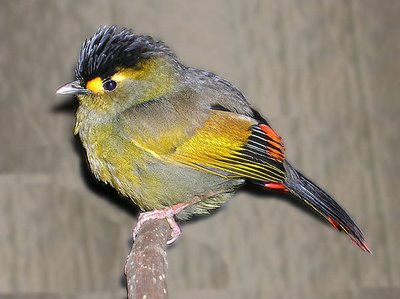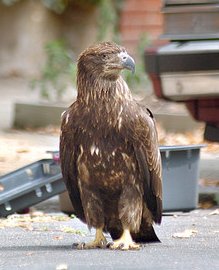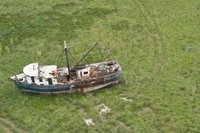You can now find the latest information about DC Audubon events and conservation news at http://www.dcaudubon.org/blog.
Please join us there and change your bookmarks.
-John
Thursday, March 22, 2007
Thursday, October 05, 2006
Talk about Birds in DC
Join DC Audubon and other Capitol city birders at Riverby's Books!
DC Audubon is co-hosting a talk on birds in the DC area. Peter Vankevich, DC Audubon member and author of a monthly DC birding column in the Hill Rag, and others will discuss what birds you may see in DC and tips on how to identify them. Reception to follow.
Riverby's Books
417 East Capitol St., SE
Oct. 19 @ 7 PM
DC Audubon is co-hosting a talk on birds in the DC area. Peter Vankevich, DC Audubon member and author of a monthly DC birding column in the Hill Rag, and others will discuss what birds you may see in DC and tips on how to identify them. Reception to follow.
Riverby's Books
417 East Capitol St., SE
Oct. 19 @ 7 PM
Tuesday, September 12, 2006
New Species: Bugun Liocichla
A beautiful new species has been discovered in India. The new species is a liocichla, related to babblers. An astronomer first saw the species in 1995 but could not identify it with existing field guides. He did not see it again for another decade. A colleague suggested that it was an Emei Shan Liocichla (Liocichla omeiensis), a species that occurs 1,000 km away in southwest China. In May 2006, he caught one bird. Measurements taken from that bird, as well as differences in plumage and calls, indicated that this liocichla was a separate species. It has been designated Bugun Liocichla (Liocichla bugunorum) after the local Bugun tribe that owns the forest where most sightings were made.


Friday, September 08, 2006
Upcoming Field Trip to Rock Creek Park
DC Audubon field trip announcement: mark your calendars.
Next Sunday, Sept. 17, join DC Audubon's annual field trip to Rock Creek Park in search of Fall migrants. We'll be looking for those confusing Fall warblers, of course, but not neglecting any others. Meet by the Rock Creek Nature Center at 7 A.M. (5200 Glover Rd., N.W., about 1/4 mile south of the intersection of Glover and Military Roads). The Ridge and Maintenance Yard areas will get most of our attention, but we may visit others (within walking distance from the Center) at the leader's discretion. We should finish up by 11. Besides the trusty binocs & field guide, I recommend insect repellant, sunscreen, and waterproof footwear (not a bad idea to bring water & snacks as well).
Please RSVP to the leader, Paul DeAnna by telephone in the evenings after 6pm (202) 544-2680. Please include a phone number where you can be reached the evening before the trip, just in case a weather postponement becomes necessary. If you can offer a ride to a non-driving birder in your neighborhood, please let me know the general area you're coming from. I'll do what I can to put those offering rides in touch with those needing them. Detailed driving directions are available on the Park's website.
Rock Creek is also accessible by public transportation. Take the E2 bus to the intersection of Miltary Road and Glover Road (a.k.a. Oregon Ave), NW. From there follow the path at the southeast corner of the intersection to the Nature Center.
An announcement of this field trip is also posted on our website.
Next Sunday, Sept. 17, join DC Audubon's annual field trip to Rock Creek Park in search of Fall migrants. We'll be looking for those confusing Fall warblers, of course, but not neglecting any others. Meet by the Rock Creek Nature Center at 7 A.M. (5200 Glover Rd., N.W., about 1/4 mile south of the intersection of Glover and Military Roads). The Ridge and Maintenance Yard areas will get most of our attention, but we may visit others (within walking distance from the Center) at the leader's discretion. We should finish up by 11. Besides the trusty binocs & field guide, I recommend insect repellant, sunscreen, and waterproof footwear (not a bad idea to bring water & snacks as well).
Please RSVP to the leader, Paul DeAnna by telephone in the evenings after 6pm (202) 544-2680. Please include a phone number where you can be reached the evening before the trip, just in case a weather postponement becomes necessary. If you can offer a ride to a non-driving birder in your neighborhood, please let me know the general area you're coming from. I'll do what I can to put those offering rides in touch with those needing them. Detailed driving directions are available on the Park's website.
Rock Creek is also accessible by public transportation. Take the E2 bus to the intersection of Miltary Road and Glover Road (a.k.a. Oregon Ave), NW. From there follow the path at the southeast corner of the intersection to the Nature Center.
An announcement of this field trip is also posted on our website.
Thursday, September 07, 2006
A Swift Night Out
If you know the location of a chimney swift roost, consider participating in A Swift Night Out. This project was begun to increase public awareness of chimney swifts and to support their conservation. There are two weekend counts this summer, one in August (already passed) and one this weekend. Here are the directions:
Chimney swifts became common in urban areas because of the availability of chimneys and other vertical structures for nesting. However, in recent years the population has declined as chimney construction has changed to discourage nesting. Swifts benefit city residents by consuming large number of insects every day. For more information on chimney swifts, see ChimneySwifts.org.
Here is how it works: Keep your eyes to the skies at dusk in late July and watch for areas where swifts are feeding. Look for a tall shaft, chimney or similar structure to locate where Chimney Swifts (central to east coast) or Vaux's Swift (Pacific coast) go to roost in your area.See here for contact information and results from previous years.
This year, on one night over the weekend of August 11, 12, 13, and / or September 8, 9, 10 observe the roost starting about 30 minutes before dusk and estimate the number of swifts that enter. When you have your number, contact us with your results. That's all there is to it!
Please include the following information:
- Number of swifts counted
- Time (and time zone)
- Date
- Location
- Address: city, state/province
- Broad description of the site, e.g. school, warehouse, residence, Chimney Swift Tower, etc.
- Weather conditions may also be reported.
Chimney swifts became common in urban areas because of the availability of chimneys and other vertical structures for nesting. However, in recent years the population has declined as chimney construction has changed to discourage nesting. Swifts benefit city residents by consuming large number of insects every day. For more information on chimney swifts, see ChimneySwifts.org.
Wednesday, August 30, 2006
Bald Eagle in Baltimore
 An immature bald eagle caused a stir in Baltimore today by landing on a city sidewalk in a residential neighorhood. It walked around on the sidewalk and the street for an hour and a half. Residents assumed that something was wrong with it and had called the Maryland Department of Natural Resources to send a wildlife rescuer. But before this could be arranged, the eagle flew away.
An immature bald eagle caused a stir in Baltimore today by landing on a city sidewalk in a residential neighorhood. It walked around on the sidewalk and the street for an hour and a half. Residents assumed that something was wrong with it and had called the Maryland Department of Natural Resources to send a wildlife rescuer. But before this could be arranged, the eagle flew away.The Sun article provides two possible explanations from local wildlife experts. One focused on a possible injury.
"Why the heck it would stand around on Bolton Street for an hour? Who knows?" said Glenn Therres, associate director of the Wildlife and Heritage Service at the Maryland Department of Natural Resources. "I don't know if it flew into something and was dazed for a while. It could have been injured, but the fact that it flew away suggests the injury might not have been that severe."A second explanation is that it was merely resting.
At any given time, there are about 2,000 bald eagles in Maryland, Therres said. The eagles nest along the shores of tidal waters in the region, but the birds - which were upgraded to threatened from endangered in recent years - rarely if ever hang out on city sidewalks, Therres said.
"There are a lot of them floating around, acting like teenagers and juveniles, just kind of looking for a good place to eat or to socialize with other birds their own age," Therres said. "A wooded shoreline on the Potomac or Susquehanna [rivers], but not normally in an urban neighborhood in Baltimore City."
David Curson, director of bird conservation for the Maryland and District of Columbia branch of the National Audubon Society, said the bird might have eaten a large catch of fish and was too stuffed and lazy to move.
"It's difficult to explain, but one possibility is, it may have eaten a large meal," Curson said. "Sometimes, when a bird like that eats a large meal like that it gets weighed down. But without knowing all the facts and not having seen the bird myself, it's difficult to be sure."
Monday, August 28, 2006
Katrina Updates
 Now that we have arrived at the one-year anniversary of Hurricane Katrina's landfall on the Gulf Coast, newspaper articles are considering the lingering damage done by the storm. Many refuges along the coast were hard-hit and are struggling to recover. Part of the problem is that the storm washed salt water into fresh water ecosystems and killed vegetation that could not stand the salinity. The waters also dumped all forms of trash and toxic waste into the refuges. Cleaning and restoring the marshes will take years and substantial investment.
Now that we have arrived at the one-year anniversary of Hurricane Katrina's landfall on the Gulf Coast, newspaper articles are considering the lingering damage done by the storm. Many refuges along the coast were hard-hit and are struggling to recover. Part of the problem is that the storm washed salt water into fresh water ecosystems and killed vegetation that could not stand the salinity. The waters also dumped all forms of trash and toxic waste into the refuges. Cleaning and restoring the marshes will take years and substantial investment.The refuges damaged along the coast are important for both breeding and migratory birds. Twelve Important Bird Areas lay in the direct path of the storm. The long-term effects of the storm on the birds that used those areas will not be known until more research is done. In the short term, many birds seem to have abandoned their traditional nesting habitats. Among the species with reduced nesting colonies include Brown Pelicans, several species of herons, Black Skimmers, and Sandhill Cranes.
On a lighter note, Judith Toups reports that in the weeks after Hurricane Katrina, her yard was filled with ruby-throated hummingbirds.
Subscribe to:
Comments (Atom)
